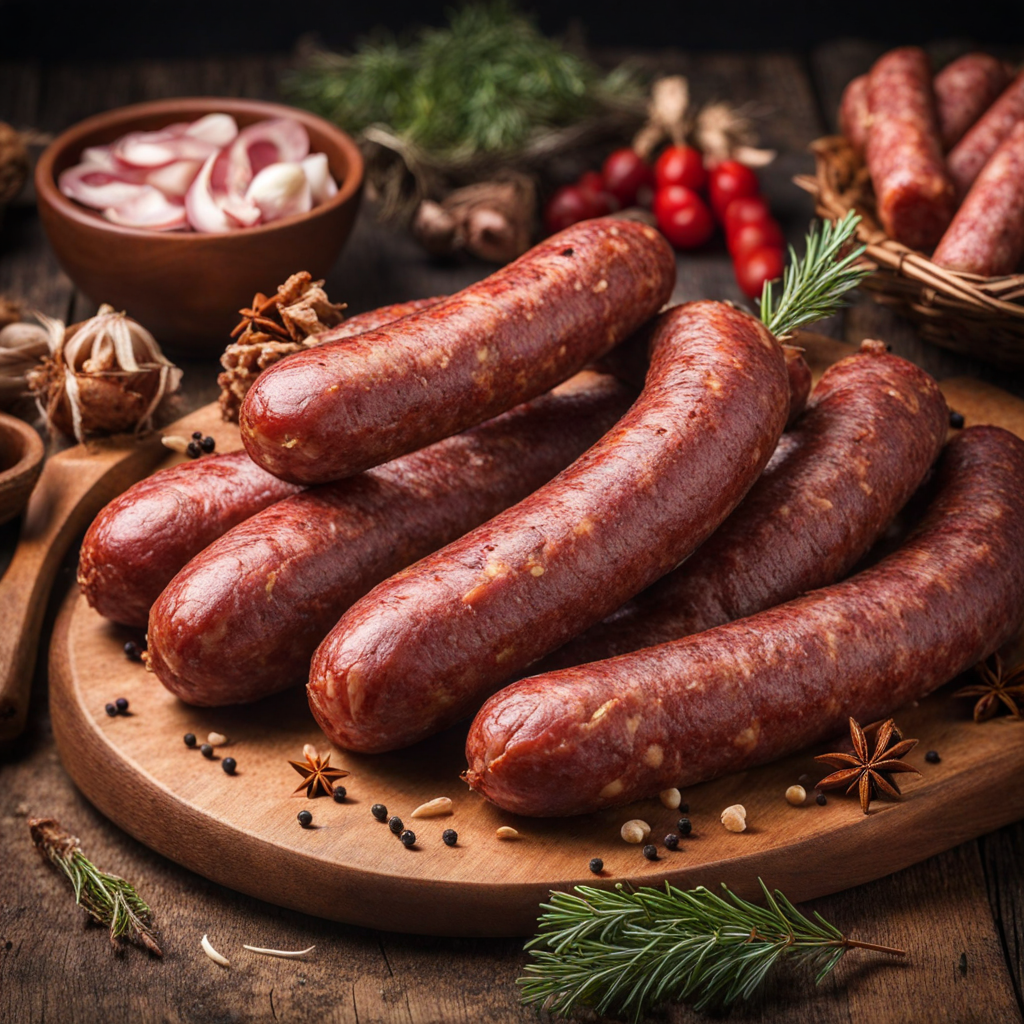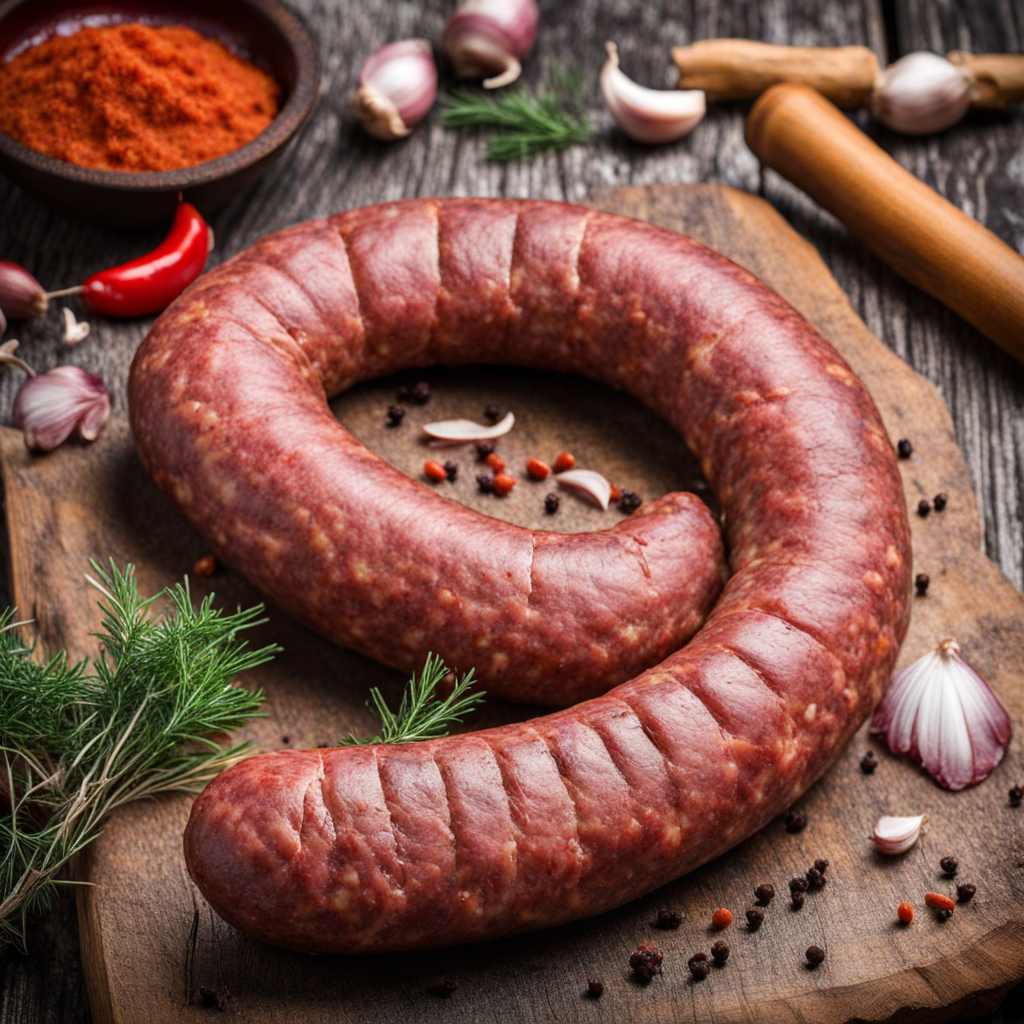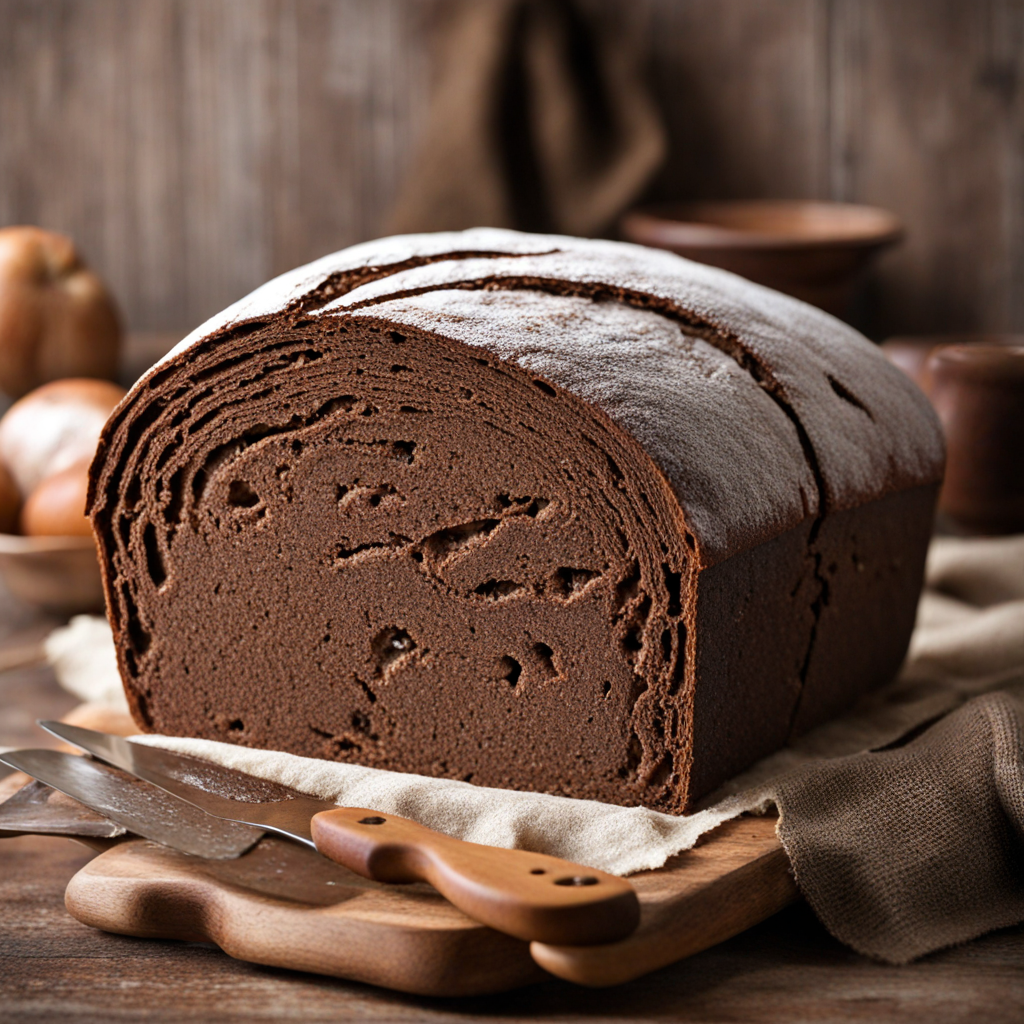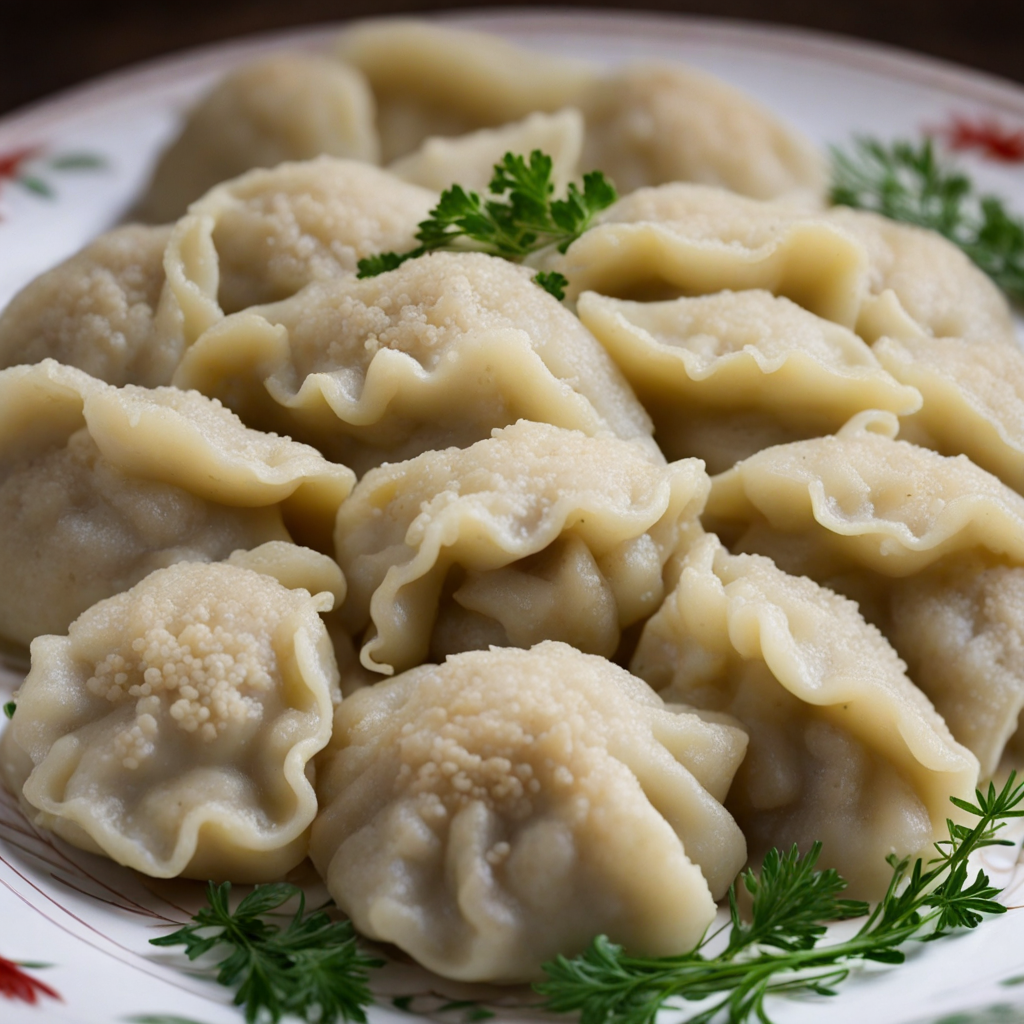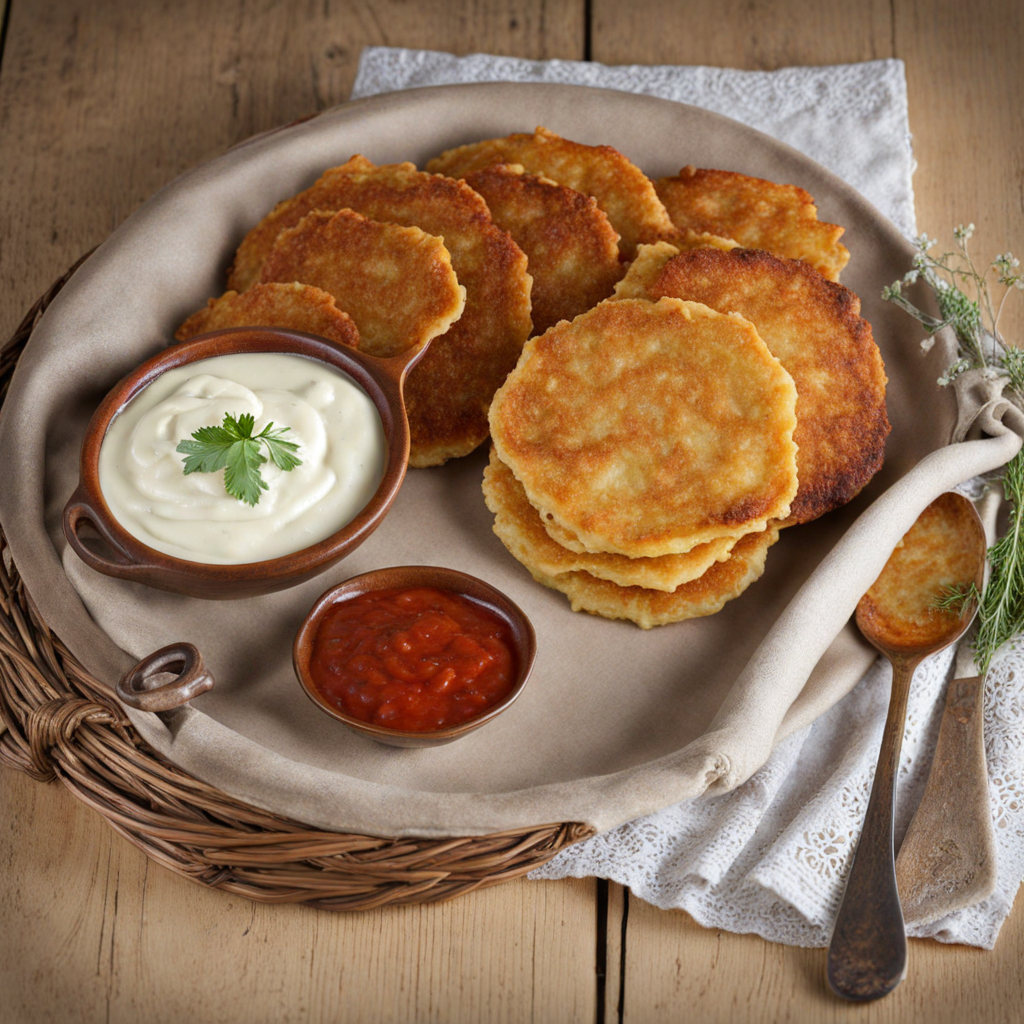Skilandis
Skilandis is a traditional Lithuanian delicacy that embodies the rich culinary heritage of the country. This smoked sausage is typically made from a combination of pork and beef, seasoned with a careful blend of spices that may include garlic, black pepper, and other aromatic herbs. The meat is finely minced and encased in a natural casing, often made from hog intestines, which helps to retain the moisture and flavor during the smoking process. The result is a sausage that is not only hearty and flavorful but also showcases the quality of the local meats used in its preparation. What sets Skilandis apart is its unique preparation method, which involves both curing and smoking. The sausages are air-dried to develop a robust flavor and then smoked over a variety of hardwoods, imparting a deep, smoky aroma that tantalizes the senses. Each bite reveals a delightful contrast of textures—the initial firmness gives way to a succulent juiciness, making it a satisfying treat. Often served sliced thin, Skilandis can be enjoyed as part of a charcuterie board or paired with traditional Lithuanian breads and pickles, creating a delightful balance of flavors. This beloved dish is not just a culinary experience; it's a celebration of Lithuanian culture and tradition. Often enjoyed during festive gatherings and family celebrations, Skilandis is a testament to the art of preserving food through time-honored methods. For those looking to explore new tastes, this flavorful sausage offers a delicious glimpse into Lithuania's rich gastronomic landscape, inviting you to savor the authentic flavors of Eastern European cuisine.
How It Became This Dish
Skilandis: A Journey Through Lithuanian Culinary Heritage Origins and Ingredients Skilandis is a traditional Lithuanian cured meat product, primarily made from pork. Its name is derived from the word "skilandis," which refers to the method of preparation and the finished product itself. The origins of Skilandis can be traced back to the rural regions of Lithuania, where preserving food was essential for survival, especially during the long, harsh winters. The primary ingredients of Skilandis include high-quality pork—often from the shoulder or ham—spices, and herbs. The meat is typically seasoned with a blend of salt, garlic, black pepper, and sometimes marjoram or other local herbs. The preparation involves curing the meat, stuffing it into a natural casing (traditionally made from the pig’s intestines), and then smoking it over a mixture of hardwoods, which imparts a distinct flavor. This process not only enhances the taste but also preserves the meat, allowing it to be stored for extended periods. Cultural Significance In Lithuanian culture, Skilandis is more than just a food item; it is a symbol of heritage and tradition. The art of making Skilandis has been passed down through generations, often becoming a family affair during harvest time or festive occasions. Traditionally, families would gather to prepare Skilandis as a way of celebrating community and sharing stories. It was common for men to take on the role of meat preparers, while women would handle the seasoning and stuffing. Skilandis has also found its place in various Lithuanian festivals and celebrations, particularly during the winter solstice and Christmas. It is often served during feasts, symbolizing abundance and hospitality. The dish reflects the agrarian lifestyle of Lithuania, where every part of the animal was utilized, showcasing a deep respect for food and sustainability. Development Over Time The preparation of Skilandis has evolved over the centuries, influenced by various historical, social, and technological changes. In the early days, the methods were rudimentary, relying heavily on the knowledge and skills passed down through generations. As Lithuania experienced various occupations and influences—most notably from Poland, Russia, and the German states—these interactions introduced new spices and techniques that enriched the traditional recipe. During the Soviet era, the production of Skilandis faced challenges due to food shortages and state-controlled agriculture. Many families had to rely on their own methods of production to ensure they had access to quality food. As a result, Skilandis became a staple in many households, often made during family gatherings or special occasions. This period fostered a sense of resilience and creativity among the Lithuanian people, as they adapted their culinary practices to the realities of Soviet rule. With Lithuania regaining independence in 1990, there has been a resurgence of interest in traditional foods, including Skilandis. The 21st century has seen a revival of artisanal food production, with many small-scale producers crafting Skilandis using time-honored methods. The emphasis on local, organic ingredients has led to a renaissance in traditional Lithuanian cuisine, with Skilandis being a prominent feature on restaurant menus and in gourmet food shops. Contemporary Skilandis Today, Skilandis is recognized not only as a culinary treasure but also as a key part of Lithuania's cultural identity. It is often featured in food festivals and culinary competitions, where chefs showcase their unique interpretations of this classic dish. The Lithuanian government has even taken steps to promote traditional foods, including Skilandis, through initiatives aimed at preserving culinary heritage and supporting local producers. In modern cuisine, Skilandis can be found in various forms. It is commonly served as part of a charcuterie board, accompanied by bread, pickles, and local cheeses. Chefs have begun to experiment with Skilandis, incorporating it into contemporary dishes like salads or pasta, blending traditional flavors with modern culinary techniques. Moreover, Skilandis has gained international recognition, with Lithuanian expatriates and food enthusiasts around the world seeking it out. The increasing globalization of food culture has allowed for a broader appreciation of Skilandis, leading to its inclusion in various international food festivals and markets. Conclusion Skilandis is more than just a cured meat; it is a testament to Lithuania's rich culinary history and cultural resilience. From its humble beginnings in rural kitchens to its current status as an emblem of Lithuanian heritage, Skilandis represents the enduring connection between food and identity. As Lithuania continues to explore its culinary landscape, Skilandis will undoubtedly remain a cherished staple, bridging the past with the present and future generations. In a world where culinary traditions are often overshadowed by fast food and convenience, Skilandis serves as a reminder of the importance of preserving heritage, celebrating seasonal ingredients, and fostering community through food. Whether enjoyed in a rustic farmhouse or a trendy urban eatery, Skilandis will always carry with it the stories, flavors, and traditions of the Lithuanian people.
You may like
Discover local flavors from Lithuania


